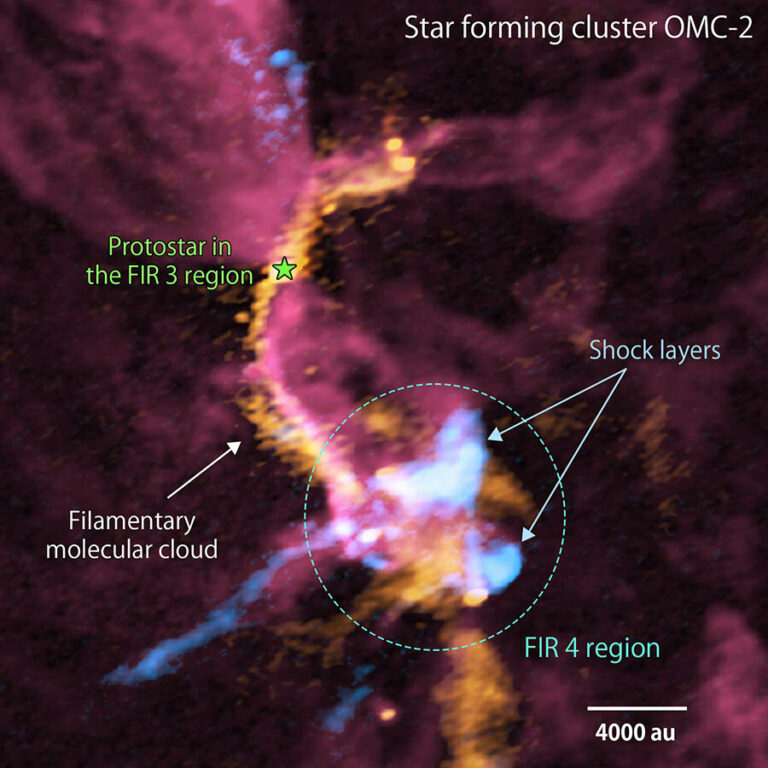The Impact of Infant Star Outflows on the Surrounding Star Formation
Baby stars often have complicated relationships with their siblings. Recent observations have revealed that a young star’s high-speed gas outflow can collide with a dense cloud of gas where other stars are in the process of forming. These observations clearly demonstrate the impact of a baby star’s outflow on a neighboring star-forming cloud. However, it is still uncertain whether this interaction disrupts or enhances the formation of stars when a baby star is kicked by its neighbor.
Stars are formed when a cloud of gas and dust collapses. However, not all of the material can be incorporated into the new star, resulting in some of it being ejected as a high-speed outflow. Since most stars are born in close proximity to each other within large groups, it has been theorized that these outflows may sometimes collide with other clouds and influence star formation in those regions. However, confirming this prediction has been challenging due to the distance of star-forming clusters from Earth and the difficulty in resolving them in detail.

To overcome these challenges, a team led by Asako Sato, a graduate student at Kyushu University, utilized the advanced capabilities of the radio telescope ALMA (Atacama Large Millimeter/submillimeter Array). They were able to accurately observe the distribution of gas and dust in a cluster-forming region located 1400 light-years away in the Orion constellation. The team’s observations revealed an outflow emitted from a baby star in a region called FIR 3, which impacted the nearby FIR 4 region where a group of young stars were being born within the same cluster. This interaction resulted in the creation of shock layers.
The team now plans to conduct further studies using ALMA to determine whether this rivalry between stellar siblings has a positive or negative impact on star formation.
This article is republished from PhysORG under a Creative Commons license. Read the original article.
Do not forget to share your opinion with us to provide you with the best posts !




0 Comments